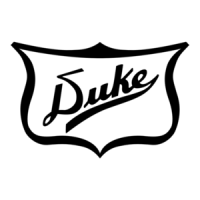What to do if mix leaks out of MTS in Duke Freezer?
- JJason AndersonSep 10, 2025
If the mix leaks out of the MTS in your Duke Freezer, remove the cover and clean inside the MTS around the rollers with the provided spray bottle. Then, install a new hose, making sure not to twist it.

